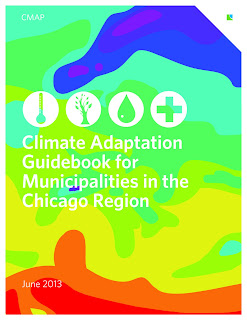The guidebook serves as a toolkit of sorts to help planners, administrators, and others formulate comprehensive plans and responses to current and future effects resulting from a changing climate. The guidebook addresses a number of water related issues and vulnerabilities, including flood protection and mitigation, meeting drinking water needs, and more.
About Newsroom Water Resource Economics New climate adaptation toolkit helps municipalities
Recent News
- Join Sea Grant to oversee program research and reporting
- Educators immerse in Great Lakes science aboard EPA research vessel
- Tomas Höök reflects on a legacy of leadership, collaboration and impact at IISG
- Freshwater jellyfish may increase in numbers as Illinois and Indiana waters continue to warm
- Tomas Höök signing off as Illinois-Indiana Sea Grant director this summer
IISG Instagram
This summer, 15 Great Lakes educators swapped lesson plans for life jackets as they boarded the Lake Guardian, the U.S. Environmental Protection Agency’s research vessel, and set sail on Lake Michigan. Through the Shipboard Science Immersion program, 5–12 grade formal and non-formal educators worked side by side with Great Lakes scientists for a week—an experience they say will ripple back to their classrooms for years to come.
Read more at the link in bio.

Looking for engaging, place-based literacy resources this school year? The Great Lakes: Our Freshwater Treasure by Barb Rosenstock is a beautifully illustrated dive into the geology, ecology, and history of our Great Lakes—perfect for sparking curiosity in learners of all ages.
📖 Learn more at the link in bio.
#GreatLakes #BookRecommendation #TeachingTuesdays
@brosenstock

Last month, Illinois and Indiana educators gathered for a two-day, professional learning workshop hosted by @duneslearning, @indianadnr, @thengrrec, and Illinois-Indiana Sea Grant to dive deep into water’s role in Earth’s systems
Using @projectwet’s newest guidebook, Water in Earth Systems, participants explored the unique ecosystems of @indianadunesnps and engaged in hands-on aquatic science activities—bringing Great Lakes learning to life in the classroom!
Thanks to all who joined us in connecting science, stewardship, and the Great Lakes!
Read More at the link in bio.

Shorelines never stop moving.
Our new video series, Shaping the Shoreline, shows how water levels, waves, storms, sediments, and structures like revetments, seawalls, and groins shape the Great Lakes coast.
Clear, quick videos designed for coastal decision makers and anyone curious about coastal change.
Watch now at the link in bio.


